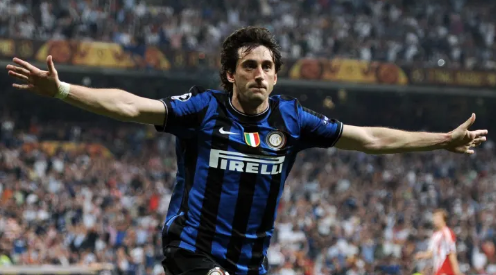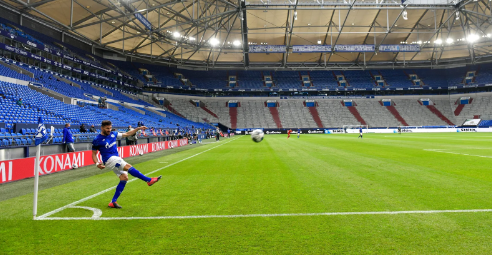Football, beloved by billions, has a history filled with transformative moments that changed the game forever. These moments went beyond the field, impacting the rules, global reach, and even the culture around football, shaping it into the vibrant spectacle we enjoy today. Modern fans can immerse themselves in this legacy and watch the sport’s evolution live, with CakhiaTV offering access to thrilling games that capture football’s timeless allure and continuous innovation. Here, we’ll dive into some of the key events that altered the course of football history and made it the global phenomenon it is today.
Contents
- 1 The Establishment of the First Football Association (1863)
- 2 The Introduction of the World Cup (1930)
- 3 The Impact of Television Broadcasting (1950s–1960s)
- 4 The European Cup: Birth of International Club Competition (1955)
- 5 The Rise of Sponsorships and Player Transfers (1970s–1980s)
- 6 The Formation of the English Premier League (1992)
- 7 VAR and Goal-Line Technology (2012–2018)
- 8 Women’s Football Gains Momentum (21st Century)
- 9 The COVID-19 Pandemic: Football in Empty Stadiums (2020)
- 10 Conclusion
The Establishment of the First Football Association (1863)
The establishment of the Football Association (FA) in 1863 was the first major event that solidified the path of football, setting standardized rules and defining the sport’s future. Until that time, different regions played by various rules, with some games allowing handling the ball and others limiting it to kicking only. When the FA codified the rules, the game’s structure became consistent, allowing for more organized play and competition.
The FA’s rules quickly became the foundation for the sport as we know it, focusing on skill, athleticism, and teamwork. This decision to formalize the sport was pivotal, as it separated football from other similar games and allowed it to grow into an internationally recognized sport. Today, the roots of those early rules still hold, even as the game has evolved through different eras and rules adjustments.
The Introduction of the World Cup (1930)
The inception of the FIFA World Cup in 1930 revolutionized the way people around the world experienced football. Hosted by Uruguay, the first World Cup featured 13 teams from Europe and the Americas and marked the beginning of a global tournament where nations competed for international supremacy. Since then, the World Cup has become the pinnacle of football achievement, a stage for showcasing the best talent, and a global unifying event that captures the attention of millions.
The World Cup created an intense passion for national pride, drawing fans together to celebrate and cheer for their countries. It grew to become a quadrennial event that draws billions of viewers, making it the most-watched sporting event globally. The tournament’s global appeal has created iconic moments in football history, from Diego Maradona’s “Hand of God” goal to Pele’s emergence as a global superstar. The World Cup shaped football as a shared experience that transcends borders and unites people of all backgrounds.
The Impact of Television Broadcasting (1950s–1960s)
Football’s popularity skyrocketed with the advent of television broadcasting in the 1950s and 1960s. Before this, fans could only watch games live in stadiums or hear about them through radio broadcasts. Television allowed football to reach homes around the world, enabling people who couldn’t attend matches in person to experience the excitement of live games.
Televised matches provided unprecedented visibility for clubs, players, and international tournaments, broadening football’s fan base and making it accessible to more people. This visibility increased sponsorship opportunities, significantly boosting the sport’s finances and raising player profiles. With live broadcasting, football grew from a local pastime to a global phenomenon, with millions tuning in to watch their favorite teams and players compete on the world stage.
The European Cup: Birth of International Club Competition (1955)
The introduction of the European Cup in 1955 marked the birth of competitive international club football, showcasing the best teams across Europe. The tournament brought top clubs like Real Madrid, AC Milan, and Liverpool into a thrilling contest for supremacy, setting the stage for what would become the UEFA Champions League. The European Cup changed the sport by allowing fans to watch their clubs compete against top teams from other countries.
The tournament fostered intense rivalries and created a platform for teams and players to achieve international fame, becoming a major draw for fans and sponsors alike. Its rebranding into the UEFA Champions League in 1992 further cemented its legacy, and it remains one of the most prestigious club tournaments in football, attracting the best players from around the world.

The Rise of Sponsorships and Player Transfers (1970s–1980s)
The 1970s and 1980s marked the beginning of an era when football’s financial potential became evident. Sponsorship deals started flooding into football, with companies recognizing the sport’s potential to reach large, passionate audiences. This influx of sponsorship money transformed the game, allowing clubs to invest in state-of-the-art facilities, training programs, and talented players.
Player transfers also took off in this era, leading to the first million-pound transfer in 1979 when Trevor Francis moved to Nottingham Forest. The rising transfer fees reflected the increasing market value of star players, adding a new layer of excitement and speculation around player movements. Sponsorships and transfer deals set the stage for football’s commercialization and the rise of “super clubs,” which used their financial strength to attract top players, adding another layer of competition to the sport.
The Formation of the English Premier League (1992)
The English Premier League (EPL), founded in 1992, marked a pivotal change in how football was organized and commercialized. The league formed as a breakaway from the Football League First Division, aiming to maximize revenue through broadcast rights and sponsorship deals. The EPL’s formation led to a huge financial windfall, as broadcasters paid massive sums for the rights to televise matches, elevating the league’s global profile.
With the EPL’s vast resources, clubs could attract top international talent, making it one of the most competitive leagues worldwide. The league’s success popularized the English game globally and established new standards for marketing, player salaries, and club management. Today, the EPL’s success is evident in its worldwide viewership and the popularity of its clubs and players.
VAR and Goal-Line Technology (2012–2018)
Technological advancements have also transformed football in recent years, with the introduction of goal-line technology in 2012 and the Video Assistant Referee (VAR) system in 2018. Goal-line technology was first used at the 2014 World Cup and provided a solution to ensure that every goal is accurately counted. This technology ended years of controversy over “ghost goals” and allowed referees to make accurate decisions in split seconds.
VAR was introduced to support referees with complex decisions, such as offsides, penalties, and red cards, by providing real-time video review. While its use has been met with both praise and criticism, VAR has undeniably changed the dynamics of officiating, ensuring fairer outcomes and reducing human error. These technological innovations represent a new era of precision in football, balancing tradition with modern demands for accuracy and fair play.
Women’s Football Gains Momentum (21st Century)
In the 21st century, women’s football gained unprecedented momentum, both in popularity and professional recognition. The Women’s World Cup, established in 1991, has grown in prestige and viewership, reaching record-breaking numbers in recent tournaments. National leagues, such as the Women’s Super League in England, have received increased funding, media attention, and sponsorship.
This growth has allowed women’s football to develop rapidly, with clubs investing more in talent, training, and resources. Star players, including Alex Morgan, Marta, and Megan Rapinoe, have become household names, inspiring a new generation of players and fans. The rise of women’s football has broadened the appeal of the sport, making it more inclusive and representative of global fan interest.

The COVID-19 Pandemic: Football in Empty Stadiums (2020)
The COVID-19 pandemic brought unprecedented challenges to football, as leagues around the world were temporarily suspended and later resumed without fans in stadiums. This period highlighted the vital role fans play in football, as matches felt different without their chants, cheers, and energy. The lack of in-person attendance had financial implications for clubs, with smaller clubs struggling to sustain operations without ticket revenue.
Despite the challenges, the pandemic led to innovative ways of engaging fans remotely. Broadcasts began integrating digital fan walls, virtual stadium sounds, and online engagement, making football accessible even when in-person attendance wasn’t possible. Clubs also turned to streaming services, and fans could keep up with the action from home, with options like Cakhia TV allowing fans to stay connected to the game they love.
Conclusion
Football’s defining events have continually reshaped the sport, from the formation of the FA to the technological advances of VAR and goal-line technology. These moments showcase how football evolves with changing times, all while preserving its spirit and excitement. The global fanbase has remained loyal through every transformation, embracing the changes that keep the game fair and thrilling. Fans today can experience every match live, and Cakhia TV continues to bring that excitement to screens, connecting audiences to the sport’s storied past and evolving future.
